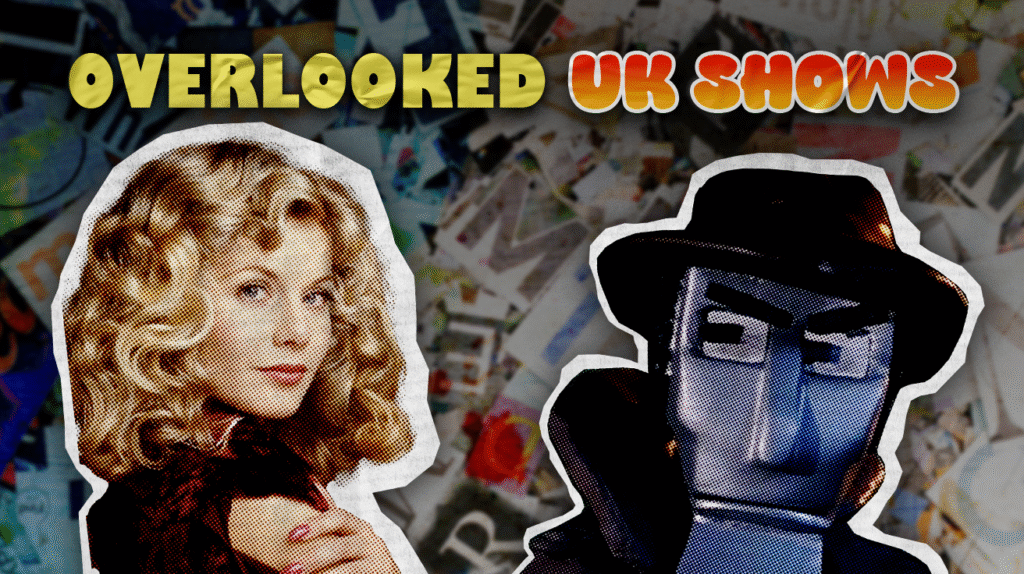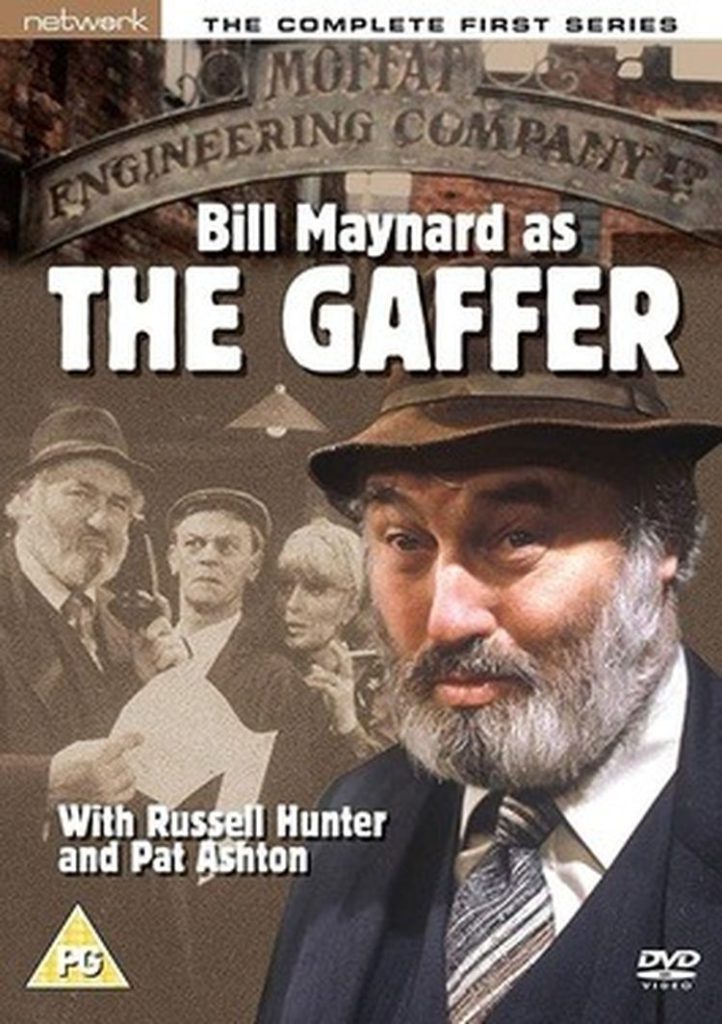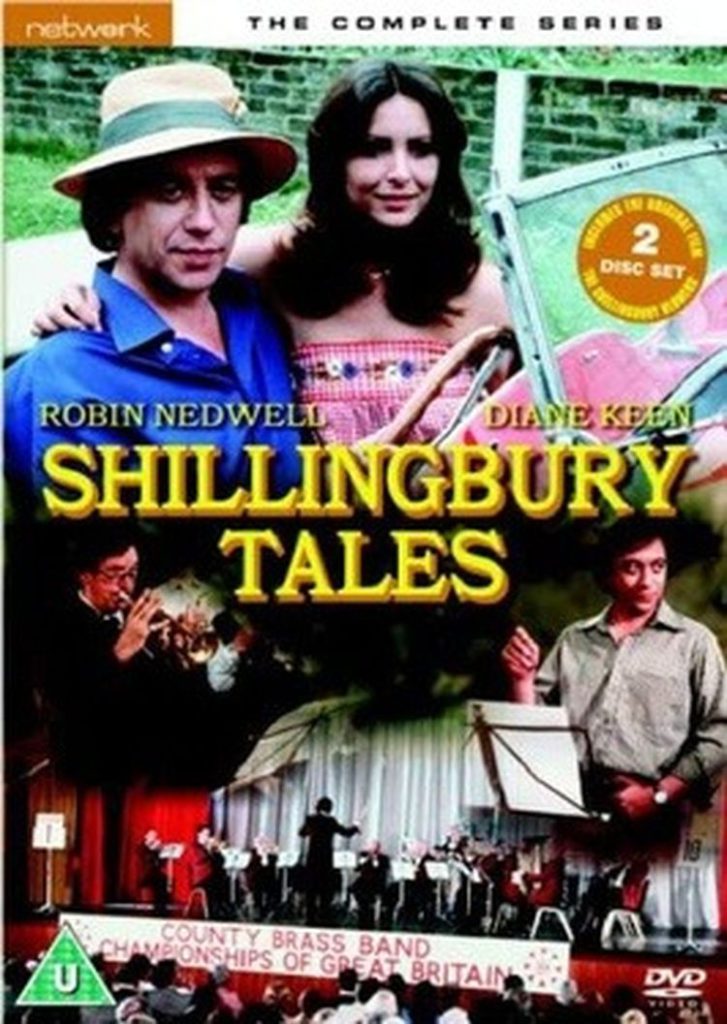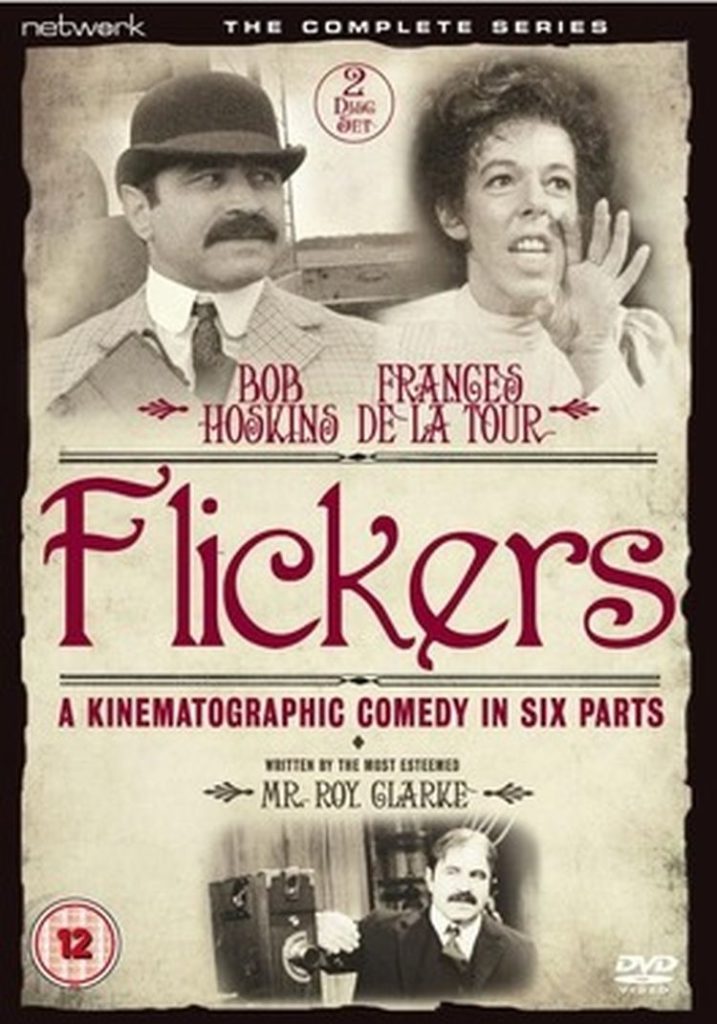
The television graveyard holds more secrets than streaming services want you to discover. While Netflix algorithms push familiar content and HBO Max recycles proven formulas, Britain’s most innovative programming remains deliberately buried.
Between 1980 and 1987, British television underwent a creative revolution that modern platforms pretend never happened. Working-class sitcoms delivered actual economic anxiety while children’s programming explored psychological complexity. These weren’t focus-grouped products designed for global markets – they were experiments that rewrote television’s playbook while executives weren’t looking.
9. Dick Spanner, P.I.

Low budgets kill most creative visions, but stop-motion pioneer Terry Adlam transformed constraints into genius. Gerry Anderson produced this 1987 detective parody featuring robotic gumshoe Dick Spanner navigating a noir-inspired future metropolis. Twenty-two six-minute episodes somehow built a fully realized world from minimal sets, cardboard buildings, and pure imagination. The series proved that limitations breed innovation.
Shane Rimmer voiced the metallic detective while visual jokes layered throughout each frame like comedic sediment. Modern animation throws millions at pixels, yet this shoestring production influenced everything from Tennents beer advertisements to inspiring a generation of stop-motion enthusiasts.
8. Jane

Marvel wasn’t first – BBC exploded comic panels into live-action brilliance decades earlier. Glynis Barber starred in 1982’s Jane adaptation, turning wartime pin-up drawings into surreal television comedy. Comedy legends Robin Bailey and Frank Thornton supported across two series running in 1982 and 1984. The Daily Mirror’s famous strip character finally moved beyond static panels.
Production teams invented comic-to-screen integration techniques that film schools still analyze today. Predating CGI excess by decades, innovative visual effects created seamless transitions between drawn and filmed elements. YouTube streams now preserve these pioneering techniques, teaching modern filmmakers how innovation happened before green screens existed.
Technical wizardry merged with British humor created something genuinely groundbreaking for its era. That same offbeat creativity wasn’t limited to television—weird 80s songs captured the era’s eccentric spirit in the music world as well.
7. The Gaffer

Hollywood glamorizes workplaces while Bill Maynard’s Fred Muffett showed actual industrial decline. Running three seasons from 1981 to 1983, this Yorkshire Television production followed a struggling engineering firm owner battling Britain’s early 1980s economic turbulence. Creator Graham White metamorphosed economic anxiety into working-class comedy gold. Authentic frustrations replaced manufactured sitcom situations throughout every episode.
Physical copies trade like rare vinyl among collectors, remembering when sitcoms reflected genuine blue-collar reality. Mainstream comedy ignored these authentic workplace struggles for glamorous alternatives. Modern television largely forgets working-class stories exist – making this series essential viewing for understanding how comedy once embraced industrial authenticity. The show documented disappearing manufacturing jobs with unexpected warmth and humanity.
6. Chocky

Safe children’s programming dominates today, while Wyndham’s 1984 ITV adaptation, Chocky, explored psychological complexity. Young Matthew’s mysterious alien contact begins innocently before darker implications emerge. Parents still discuss memorable atmospheric dread created through minimal effects and maximum suggestion. Based on John Wyndham’s 1968 novel, sophisticated storytelling respected developing minds rather than protecting them from challenging concepts.
Modern helicopter parents would protest these intensity levels immediately. Psychological tension built gradually, trusting young audiences to process complex themes about consciousness and identity. Genuine unease replaced jump scares, creating lasting impressions on viewers who experienced this unique experiment in children’s science fiction. The series proved youth programming could tackle philosophical questions without condescension or simplification.
5. Return to Treasure Island

Acting powerhouse Brian Blessed doesn’t merely perform – he absolutely detonates onscreen. His 1986 Long John Silver transformed ten HTV Wales episodes into Shakespearean maritime adventures. Adult Jim Hawkins found himself paired with the pirate equivalent of a Category 5 hurricane. Disney’s co-production delivered unexpected dramatic weight to familiar material.
Production values matched theatrical releases while Blessed’s volcanic interpretation redefined television piracy forever. Multiple Treasure Island adaptations exist across decades, yet this sequel earned particular critical acclaim purely through personality-driven performances. Missing this series means missing essential British television history – specifically the medium’s most gloriously unrestrained pirate portrayal. DVD scarcity makes finding complete episodes challenging but worthwhile.
4. Hammer House of Mystery and Suspense

Horror reputation overshadowed Hammer’s sophisticated mystery anthology until thirteen 1984 psychological thrillers showcased their range. International stars Peter Wyngarde and Dirk Benedict joined various episodes exploring human darkness without gore. Gothic excess yielded to subtle Hitchcockian suspense meeting proto-Black Mirror complexity. Each self-contained story prioritized psychological intrigue over visceral shocks.
American audiences knew it as Fox Mystery Theater, though rebranding couldn’t disguise distinctly British sensibilities. Hour-long episodes emphasized cerebral games over splatter effects. Talking Pictures TV occasionally screens episodes, maintaining devoted cult followings. Quality drama hunters searching obscure channels unearth these rarely-seen gems. Superior writing and performances justify dedicated efforts locating this underappreciated anthology series.
3. Shillingbury Tales

Rural comedy rarely hits a high note, but Shillingbury Tales put a brass band center stage. ITV premiered a feature-length pilot, “The Shillingbury Blowers,” on 6 January 1980, then six one-hour episodes from May to June 1981. It captured village life in Aldbury with vivid authenticity. It spread like seeds on a country breeze, sowing character-driven storytelling across its episodes.
Each episode takes us to village council meetings, the Oddfellows’ Arms pub, and narrow country lanes. Robin Nedwell, Diane Keen, and Bernard Cribbins lead a cast that bends sitcom conventions without breaking them. Creator Francis Essex trusts gentle pacing over punchlines, letting relationships unfold at their own rhythm.
While modern streaming algorithms push rapid-fire content, some viewers still long for the charm and simplicity of the past—just like the activities we loved from the 1980s that made life feel less rushed.
2. Flickers

Hurricane-force energy defines Bob Hoskins attacking early cinema history with gusto. Roy Clarke penned this 1980 six-episode masterclass exploring British moviemaking’s chaotic birth. Frances de la Tour and Sheri Hewson completed an exceptional ensemble cast creating sparks without expensive effects. Period authenticity merged with timeless human ambition throughout each installment.
Historical accuracy balanced comedy perfectly while character dynamics drove narrative momentum forward. Zero official DVD releases currently exist – underground circulation alone keeps this gem alive. Bootleg collectors guard rare recordings fiercely, understanding their cultural value. Sharp writing paired with stellar performances deserves proper restoration and wider rediscovery. Film students would benefit enormously from studying Clarke’s economical yet rich character construction.
1. Keep It In The Family

British television comedy’s awkward evolution gets documented across twenty-nine episodes spanning 1980 through 1983. Robert Gillespie’s newspaper cartoonist patriarch somehow balanced unconventional puppet sidekicks against traditional domestic situations. Creator Brian Cooke crafted this remarkable transitional oddity during the sitcom format upheaval. Neither purely conventional nor completely experimental, critics initially missed its historical significance entirely.
Format identity crisis inadvertently captured British comedy’s ongoing transformation with perfect timing. Contemporary viewers witnessed real-time genre evolution without recognizing its importance, but media historians now treasure these preserved growing pains as invaluable documentation.





















